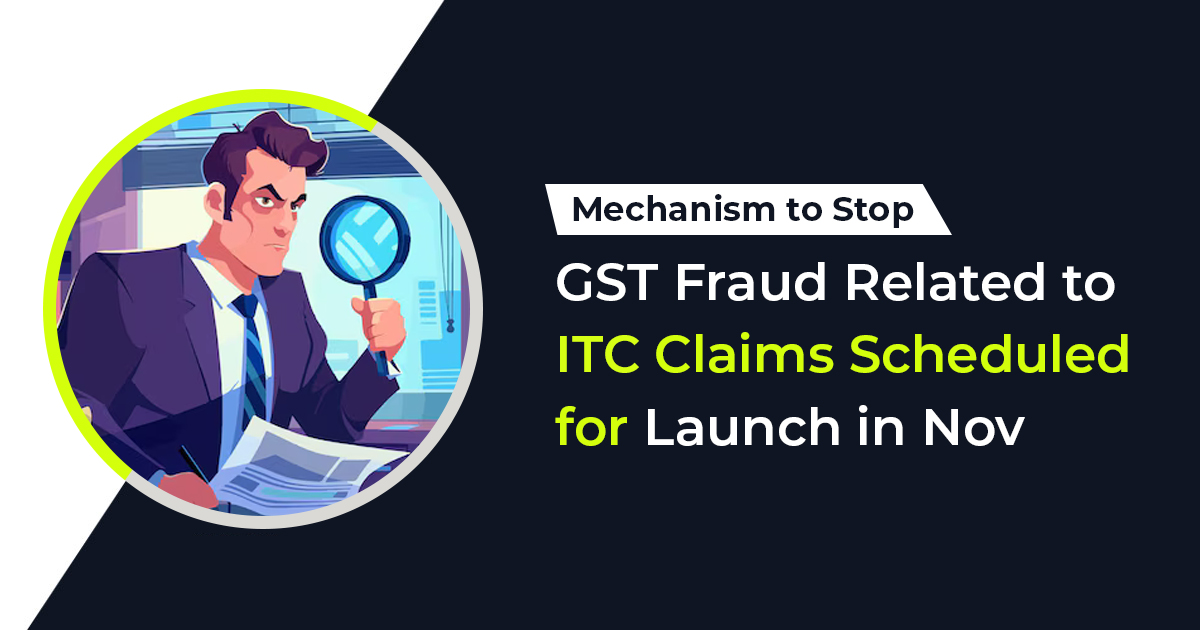
As per the senior government official, the Union Ministry of Finance is in a position to develop a process to validate the bogus Input tax credit (ITC).
Towards the identical objective, the Central Board of Indirect Taxes and Customs (CBIC) and the Goods and Services Tax Network (GSTN) are collaborating to develop an ITC ledger. As per the official the ledger is anticipated to be operational in November.
Specific businesses under the GST framework should file the tax via RCM, which means the recipient of goods or services is liable to pay the same tax rather than the supplier. The same approach has the objective of expanding the reach time of the GST for distinct unorganized sectors in which the suppliers might not be registered and establishing that services imported from overseas are levied to tax.
An ITC can be claimed by the recipient after filing the tax and issuing an invoice. There were instances in which the ITC was asserted even when the receiver had not filed the GST under RCM or where the claimed ITC was much more. To address the same problem the CBIC has ensured that the ledger precisely shows the RCM-related information.
Unethical individuals frequently take advantage of other people’s identities to acquire fraudulent GST registrations, enabling them to defraud the government.
Such illegitimate registrations are utilized to illegally transfer input tax credits by issuing invoices that lack any real delivery of goods or services.
Currently, an identical ledger exists under GSTN for non-RCM transactions. Till the time of processing to the press an email sent before the finance ministry was left unanswered.
Tax experts cited that executing the same new process would need effective collaboration between businesses and the Goods and Services Tax Network (GSTN). The making of an ITC ledger to monitor the ITC disbursement can improve transparency, lessen tax evasion, and ensure that businesses adhere to the GST precisely.
Other reporting needs for the assessees may be engaged to execute the same new system to establish their ITC claims.
In a written reply to the Lok Sabha, Finance Minister of State Pankaj Chaudhary disclosed that the identification of fraudulent Input Tax Credit has been increased by 50 percent in FY24 to over Rs 36,000 crore. Still, under 10 percent of this sum has been deposited voluntarily.
Since transaction-level purchase and sale data is accessible through GSTN, the government can utilize advanced analytical tools, data analytics, and artificial intelligence to develop new methods for identifying fraudulent credit claims and associated revenue losses.
It is cited on the issues faced by the government in monitoring the bogus ITC fraudsters- The challenges emerge from masterminds who generate bogus ITC via handling a complex network of entities across various jurisdictions. We address the same problems via coordination with distinct stakeholders along with law enforcement agencies.
In FY24, Central GST officers registered 9,190 cases involving fake ITCs of Rs 36,374 crore individuals were arrested, with Rs 3,413 crore voluntarily deposited in these matters. Fetching of bogus GST ITC claims increased by 51% from FY23 when Rs 24,140 crore was flagged in 7,231 cases.
152 people were arrested, and Rs 2,484 crore in taxes was voluntarily deposited in FY23.









